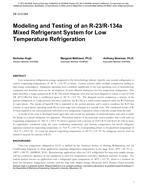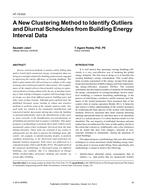Click here to purchase
In many fields, fault detection is approached as a change point detection problem. The purpose of change point detection is to determine with confidence when the behavior of a timeseries has changed. Applying change point detection to residential smart thermostat data is an important step towards performing fault detection using this data. However, most change point detection algorithms require either that the nominal operating conditions be known or that parameters be tuned carefully in order for the algorithm to succeed. A change point detection algorithm for smart thermostat data must be simple in both tuning requirements and computational load, and the algorithm must be capable of being deployed across thousands of systems simultaneously. The change point detection method presented and applied to smart thermostat data in this paper is based on the t-statistic which is commonly used for hypothesis testing when sample sizes are small. The advantage of using the t-statistic is that it conveniently accounts for situations when little data is available for the nominal operating behavior. The resulting algorithm is robust and easy to implement.Monte Carlo methods are used to determine appropriate thresholds and evaluate the effectiveness of the algorithm interms of how the Type II error rate increases as both the sample size and the signal-to-noise ratio decreases. The algorithm is then applied to smart thermostat data both retrospectively and recursively and several interesting case studies are presented.
Citation: 2020 Winter Conference, Orlando, FL Technical Papers
Product Details
- Published:
- 2020
- Number of Pages:
- 13
- Units of Measure:
- Dual
- File Size:
- 1 file , 1.9 MB
- Product Code(s):
- D-OR-20-001


